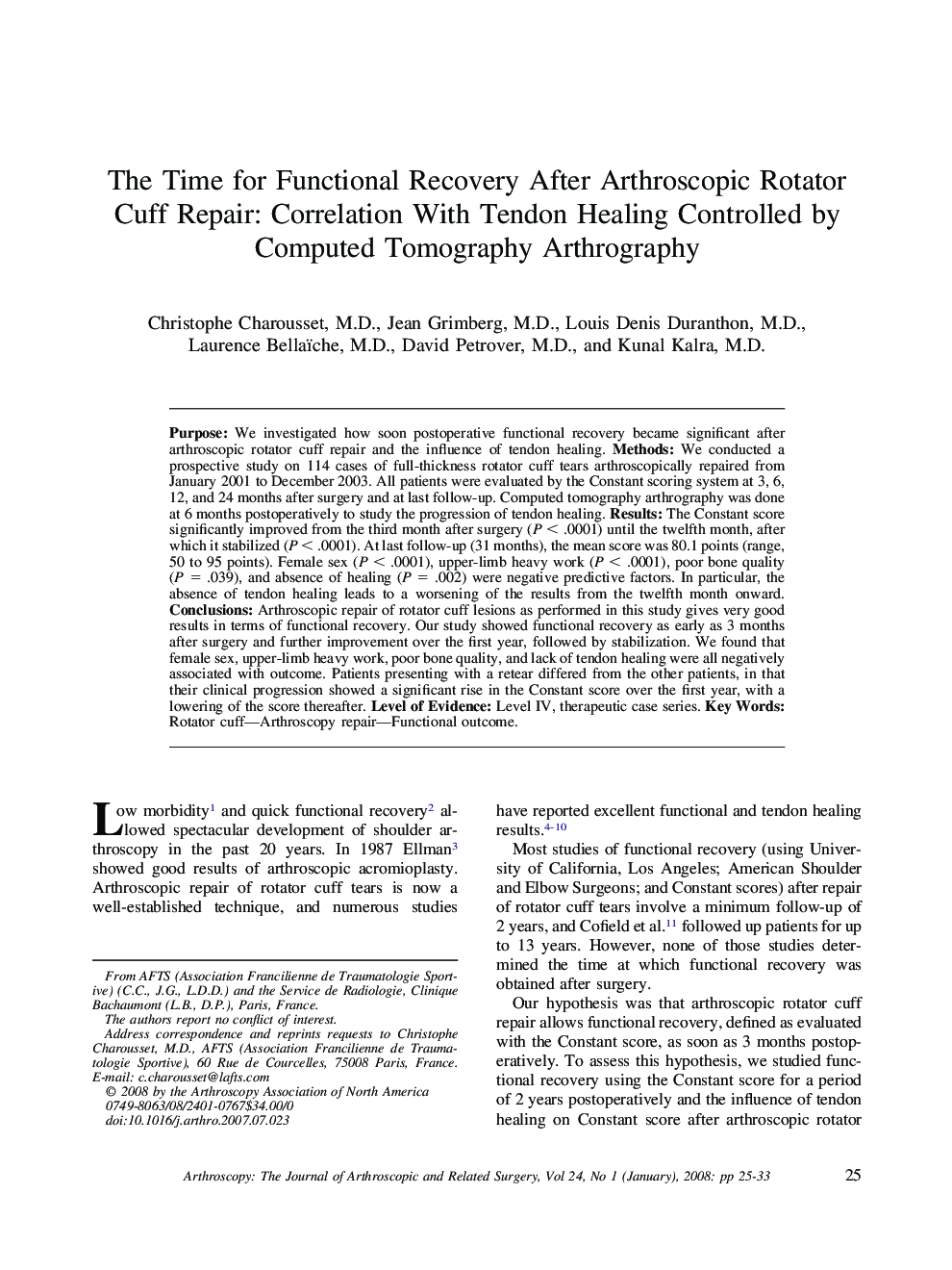| Article ID | Journal | Published Year | Pages | File Type |
|---|---|---|---|---|
| 4045199 | Arthroscopy: The Journal of Arthroscopic & Related Surgery | 2008 | 9 Pages |
Purpose: We investigated how soon postoperative functional recovery became significant after arthroscopic rotator cuff repair and the influence of tendon healing. Methods: We conducted a prospective study on 114 cases of full-thickness rotator cuff tears arthroscopically repaired from January 2001 to December 2003. All patients were evaluated by the Constant scoring system at 3, 6, 12, and 24 months after surgery and at last follow-up. Computed tomography arthrography was done at 6 months postoperatively to study the progression of tendon healing. Results: The Constant score significantly improved from the third month after surgery (P < .0001) until the twelfth month, after which it stabilized (P < .0001). At last follow-up (31 months), the mean score was 80.1 points (range, 50 to 95 points). Female sex (P < .0001), upper-limb heavy work (P < .0001), poor bone quality (P = .039), and absence of healing (P = .002) were negative predictive factors. In particular, the absence of tendon healing leads to a worsening of the results from the twelfth month onward. Conclusions: Arthroscopic repair of rotator cuff lesions as performed in this study gives very good results in terms of functional recovery. Our study showed functional recovery as early as 3 months after surgery and further improvement over the first year, followed by stabilization. We found that female sex, upper-limb heavy work, poor bone quality, and lack of tendon healing were all negatively associated with outcome. Patients presenting with a retear differed from the other patients, in that their clinical progression showed a significant rise in the Constant score over the first year, with a lowering of the score thereafter. Level of Evidence: Level IV, therapeutic case series.
